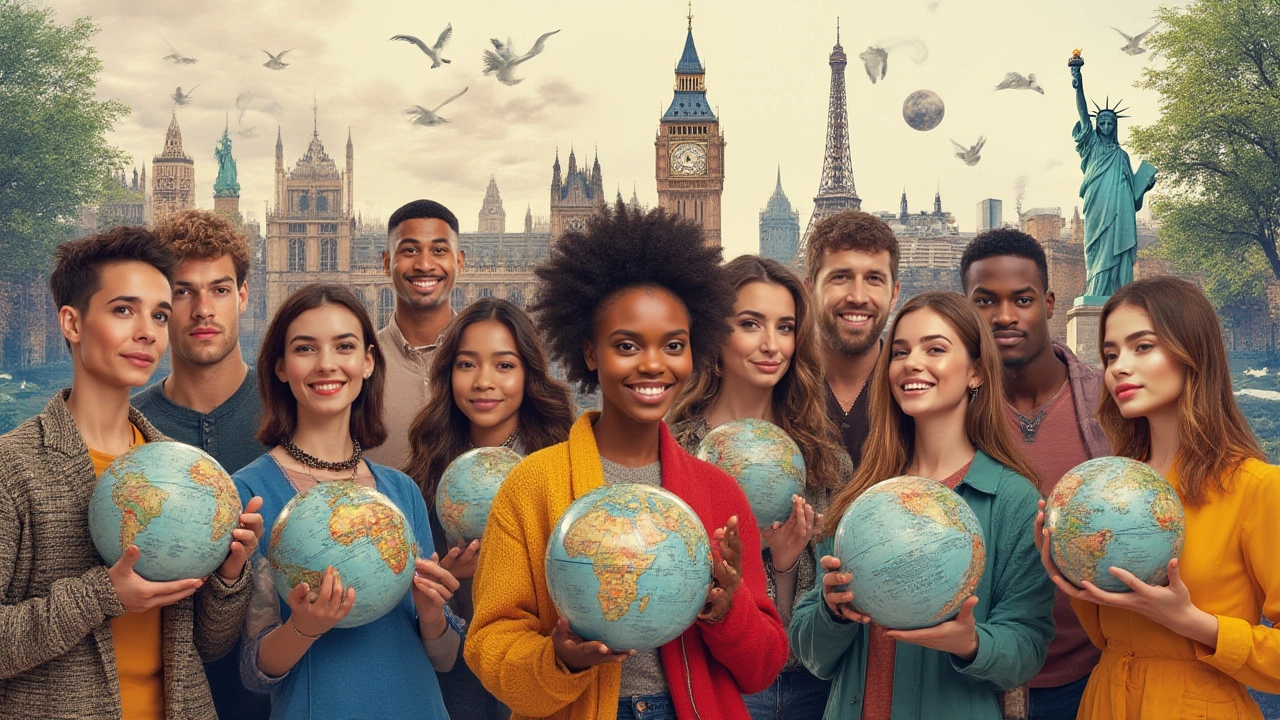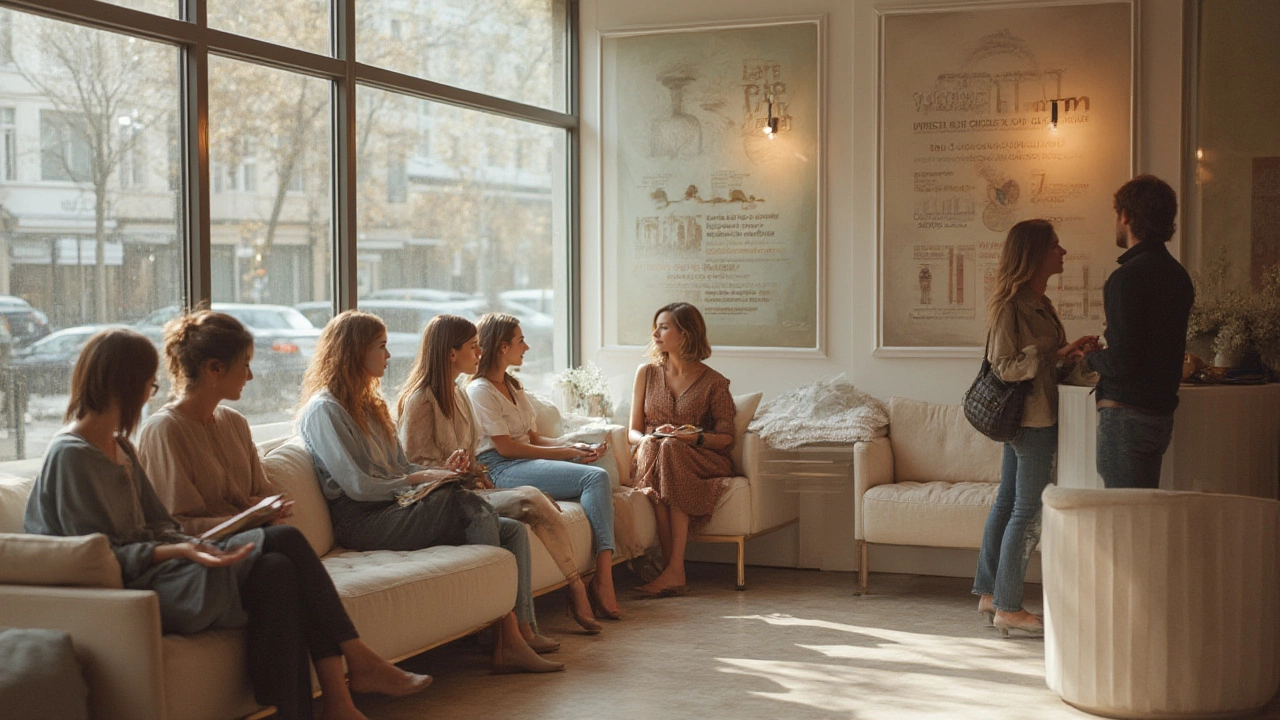 Jul, 7 2025
Jul, 7 2025
At a posh dinner party, someone murmurs “Botox” and the mood shifts. Eyes spark with curiosity. It’s one of those words that either sparks a confession about wrinkle-busting or an awkward silence. Here’s the shocker—Botox isn’t just for Hollywood. The whole world’s on the bandwagon. But which country uses it the most? It’s not always who you’d guess. Welcome to a world where ‘frozen’ faces spark fiery debate and some surprising places lead the Botox revolution.
The World’s Botox Hotspots: Who’s Injecting the Most?
The International Society of Aesthetic Plastic Surgery keeps a running tally of cosmetic crazes, and their latest numbers land the US firmly at the top of the Botox leaderboard. In the most recent stats, Americans clocked about 2.5 million Botox procedures in a single year. That dwarfs most other countries, even ones where beauty is practically a religion. No other single country can quite match the States for sheer volume of injections.
But here’s where it gets interesting. Brazil isn’t far behind, with roughly 1.2 million procedures. South Korea may have a smaller population, but don’t let that fool you—Korea leads the world when it comes to cosmetic procedures per capita. Walk around Gangnam or Apgujeong in Seoul, and clinics are everywhere. People even give Botox as gifts. Germany and Japan round out the top five, with both countries taking a no-nonsense approach to looking sharp at any age.
What about the UK or Australia? Brits are getting there—over 150,000 procedures a year, and climbing. Aussies love the sun, but they’re trying hard not to look like raisins, with Botox clinics popping up from Sydney to Perth. Canada’s in on it too. Even in places like New Zealand, where sheep still outnumber people, the demand for injectables keeps growing year by year.
But here’s a curveball—annual numbers are only part of the story. Some countries see the biggest growth in smaller cities, not just urban hotspots. In China, for example, rising incomes mean Botox isn’t just a big-city luxury. Young professionals from secondary cities are flocking to clinics for a quick pick-me-up, shaking off old taboos.
Per capita, South Koreans inject more often than anyone. The country’s beauty standards are fierce, and there’s no shame in a little lunchtime injection. In fact, people treat it like a dental appointment — fast, routine, and necessary. Social media is full of testimonials and tutorials, making younger and younger clients feel it’s normal to start in your twenties or even late teens.
So, short answer: The US uses the most Botox in raw numbers, but South Korea leads the world when you look at injections per person. Both are obsessed — just in their own unique ways, and for slightly different reasons.
Why Is Botox so Popular? The Surprising Science and Social Pressures
How did a treatment for twitchy eyelids become the backbone of billion-dollar beauty industry? Botox is made from a purified form of botulinum toxin (yes, the same stuff in botulism), but used right, it smoothed out lines so well it got FDA approval back in 2002. Fast-forward, and Botox’s global rise has more to do with psychology than science.
Social pressure is a big factor, especially in places like the US and South Korea. In America, it’s about staying competitive at work and looking ‘refreshed’ — not just for celebrities, but for realtors, lawyers, even teachers. Americans don’t like to look tired. In South Korea, the standards are different but just as strict. A flawless, smooth face is seen as a sign of success. Some job applicants even get asked if they’d consider ‘a little tune-up’ before interviews.
Let’s not forget about the relentless speed of TikTok, Instagram, and WeChat. Filters and augmented reality apps give users impossibly smooth skin, and everyone wants to match their online image. Dermatologists hear it every day: “Can you make me look like this selfie filter?” It’s no wonder Botox clinics are open late, with waiting rooms packed full after work or even before school.
In Brazil, looking good is woven into the fabric of society — not just for women, but for men too. Brazil’s data shows a spike in younger men booking appointments, especially before big events like Carnival or holidays. This isn’t just about looking good for Instagram; it’s about confidence, feeling relevant, and, in some cases, even job security.
Surprisingly, the stigma has faded almost everywhere. A decade ago, admitting to Botox was like spilling a top-secret—now, people compare clinics and recommend their favorite ‘injectors’ the same way they might trade recipes or talk about their favorite cafe. In parts of Japan, employers actually cover aesthetic treatments as part of work benefits, and in Miami or Los Angeles, “maintenance’ is a regular topic in fitness classes and at brunches.
Science has helped, too. Methods have gotten safer, the results look less ‘frozen,’ and side effects have dropped. Many injectors now prefer ‘baby Botox’—tiny amounts for prevention—over the old-school full-face approach. There are even studies out of Harvard and Seoul University that suggest Botox might help with things beyond wrinkles, like migraines or jaw pain. This gives more people rational reasons to try it, besides just vanity.
So the meteoric rise of Botox comes down to a stew of better science, social competition, and online influences driving everyone to look a little more polished. No wonder so many people from Auckland to New York are rolling up their sleeves for a quick lunchtime fix.

Striking Facts and Myths: What You Didn’t Know About Botox Culture
The myths about Botox are nearly as persistent as the wrinkles it treats. The classic is that Botox “freezes” your face into that mannequin look. The reality? With a good injector, it’s possible to smooth out trouble spots and still keep plenty of expression. The frozen-face effect comes from overdoing it or using a cheap knockoff — but real Botox, done right, is pretty subtle.
Here’s a weird one: In some regions of the US and UK, mobile Botox clinics set up in salons or even people’s homes, much like food trucks. That’s mostly frowned upon by experts, but there are plenty of practitioners who claim portable injections make treatments accessible to busy mums and professionals who don’t have time to hit a clinic.
Cost is another factor that surprises people. In the US, a single session for the forehead might run $300–$500. In Brazil or South Korea, it’s often much less, and clinics compete fiercely for first-timers with deals or memberships. Some fans go every three or four months, others stretch it out to six. Insurance rarely covers the cost unless you have a legitimate medical reason, like chronic migraines.
How about side effects? Yes, there are some—you can get a bruise, a droopy lid for a few weeks, or a mild headache. Long-term safety is supported by decades of clinical experience, but it’s always wise to pick a legit, experienced injector over a bargain-basement deal. Even in the countries with the highest demand, the best doctors keep tight waiting lists.
Here’s a cool fact: Botox can be used to treat way more than wrinkles. Sweaty palms, overactive bladders, teeth grinding, and severe migraines are just a few off-label uses. In fact, most plastic surgeons will say about a third of their patients try it for something medical rather than just for looks.
So, if you’ve ever wondered why a friend seems so fresh after a “spa day,” there’s a good chance they had a little chemical help. The stigma is fading, the myths are getting weeded out, and more guys are giving it a shot too—especially before weddings, reunions, or that dreaded school reunion photo. If you ever thought it was just for actresses or Instagram models, think again.
Thinking About Botox? What to Know Before Your First Shot
If you’re considering Botox because everyone around you seems to have tried it, it pays to know what you’re getting into. Number one rule: never go to someone who isn’t properly trained. Seems obvious, but shady home operators and hard-sell clinics are more common than you’d expect — especially in hotspots like LA, Rio, and Seoul.
So, how can you pick a skilled injector? It’s not just about credentials. Ask for before-and-after photos, and make sure you’re comfortable with their style of work. Some clients want “barely there” tweaks, others like dramatic smoothing, and it’s your face — don’t settle until you find someone who gets the vibe you want.
First-timers should know that results don’t hit instantly. Expect a gradual effect, kicking in three to seven days after your appointment, and lasting three to six months. Some people get a little swelling or tiny marks where the needle went in. Most side effects are minor and fade fast, but make sure to take it easy for a day—skip the gym and don’t rub your face.
Think about your goals. Are you looking for an all-over refresh, or just targeting deep frown lines? Maybe you’re curious about “preventive” Botox—a trend that’s growing especially among those in their 20s and 30s. If you’re worried about looking unnatural, talk this over with your injector, and discuss the “less is more” approach.
Watch out for red flags. Anyone who pushes massive deals, guarantees “perfect” skin, or won’t answer questions about the product’s source is best avoided. Remember, you want real, FDA-approved Botox—not some knockoff that’ll leave you with regrets.
Price can vary a lot, depending on where you live and how many areas you treat. Some clinics offer loyalty programs, but don’t let a discount cloud your judgment. The best injectors are worth the wait (and the price tag), since a good result means you look refreshed, not “done.”
Finally, ask yourself: why do you want Botox? If your main motivation is pressure from others or Instagram, maybe take a breath. If it’s about wanting to look as good as you feel—or you just love that line-erasing magic—then hey, you’re in good company. Just remember, the world’s Botox leader isn’t really about geography. Looks like the real winner is confidence, one tiny needle at a time.
